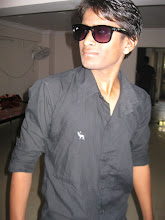1. Communication is of facts, ideas, opinions by two or more persons.
a.Exchange.
b.foreign exchange.
c.Control.
d.none of the above.
Answer: A
2.…………… channel of communication called the grapevine.
a.Formal.
b.Informal.
c.Horizontal.
d.None of the above.
Answer: B
3. The main objective of communication is ………
a.information and persuasion.
b.skill and personality development.
c.control and management.
d.none of the above.
Answer: A
4. The downward communication flow from …….
a.a subordinate to a superior.
b.a subordinate to a subordinate.
c.a superior to a superior.
d.a superior to a subordinate.
Answer: D
5. Examples of oral communication …………
a.Letter.
b.E-mail.
c.Telephone.
d.None of the above.
Answer: C
6. How to make audio-visual communication effective?
a. The pictures are colourful.
b. Clearly written.
c.Speak politely.
d.None of the above.
Answer: A
7. Advantage of written communication …………
a.save time.
b.save money.
c.permanent record.
d.none of the above.
Answer: C
8. Written communication includes ……………..
a.reports & forms.
b.interviews.
c.film.2
d.none.
Answer: A
9. Communication saves time in ……..
a.internal communication.
b.interview.
c.oral communication.
d.schedule.
Answer: C
10. The most important part of the letter is ………
a.the heading.
b.date.
c.body of the letter.
d.post script.
Answer: C
11. Advantage of oral communication ……
a.permanent record.
b.legal document.
c.save time.
d.none.
Answer: C
12. Normal salutation in chairman’s speech will be …………..
a.Ladies and Gentlemen.
b.Dear Sir.
c.Respected Sir.
d.Madame.
Answer: A
13. Internal communication is a communication between ………
a.banker and customer.
b.superiors and subordinate.
c.salesman and buyer.
d.insurance company and its customer.
Answer: B
14. Telephonic conversation is a …………
a.verbal communication.
b.non-verbal communication.
c.visual communication.
d.none.
Answer: B
15. Envelopes containing transparent papers to show the address are called …….
a.window envelops.
b.easy envelop.
c.address envelop.
d.front envelop.
Answer: C
16. In the communication cycle, the process of retranslation of signals into ideas is
called ……….
a.encoding.
b.decoding.
c.response.
d.feedback.
Answer: B
17. If each line in the inside address is started after leaving a small gap, it is known as
…………
a.block form.
b.correct form.3
c.indented form.
d.address form.
Answer: C
18. The inside address should be written ………
a.below the salutation.
b.above the heading.
c.above the salutation.
d.above the date.
Answer: C
19. Reports from the subordinates to the superiors take the form of ………
a.upward communication.
b.downward communication.
c.face-to-face communication.
d.visual communication.
Answer: A
20. Pictures, slides, films fall under ………
a.body languages.
b.audio-visual communication.
c.reporting.
d.visual communication.
Answer: B
21. Realizing the potential of the self is part of the ……..
a.communication development.
b.language development.
c.skill development.
d.personality development.
Answer: D
22. Salutation ………..
a.comes above inside address.
b.begins at left hand margin of the letter.
c.comes at the end of the letter.
d.none of the above.
Answer: B
23. “Messieurs” …….
a.A French term meaning “gentlemen”.
b.Used in singular.
c.Is a title like “Doctor”.
d.None of the above.
Answer: A
24. A memo is an example for ……….
a.internal communication.
b.external communication.
c.lateral communication.
d.none of these.
Answer: A
25. Gestures is an example for ……….
a.body language.
b.grammar.
c.speeches .
d.none of these.
Answer: A
26. Communication over telephone is an example for ……….
a.oral communication.
b.audio-visual communication.
c.internal communication.4
d.none of these.
Answer: A
27. The term communist derived from ………….. word.
a.Greek
b.Latin
c.Chinese
d.English
Answer: B
28. Communication means …………. information, feeling and thoughts, with others.
a.to receive
b.exchange of
c.conveying
d.all the above
Answer: B
29. Grapevine communication is associated with ………….. communication.
a.formal
b.informal
c.horizontal
d.none of the above
Answer: B
30. Lateral communication is between …………
a.superior and subordinate.
b.same cadre of personal.
c.subordinate and superior.
d. None of the above
Answer: B
31. Audio Visual communication combines ………
a.auditory only.
b.visual only.
c.both auditory & visual.
d.written.
Answer: C
32. Communication problems otherwise known as ……………
a.enquire.
b.barriers.
c.encoding.
d.None of the above
Answer: B
33. Posters fall under …………… communication.
a.oral.
b.visual.
c.written.
d.spoken
Answer: B
34. Informal communication is otherwise known as …………… communication.
a.grapevine
b.lateral
c.visual
d.horizontal
Answer: A
35. Horizontal communication flows through ………
a.face-to-face discussion.
b.telephonic talk.
c.periodical meeting.
d.all the above.5
Answer: D
36. Face-to-face communication means …………
a.visual communication.
b.direct conversation.
c.oral communication.
d.none of the above.
Answer: B
37. Physical Barriers to communication are ……..
a.time and distance.
b.interpretation of words.
c.denotations.
d.connotations.
Answer: A
38… is the process of arriving at agreement through consultation.
a.Consensus
b.Horizontal
c.Vertical
d.None
Answer: A
39. Information must be …..
a.accurate, complete, recent.
b.inaccurate, incomplete.
c.irregular.
d.none of the above.
Answer: A
40. Effective advice……
a.is both man-oriented & work oriented.
b.is given in the worker’s interest.
c.promotes understandings.
d.all the above.
Answer: D
41. All the media available can be broadly classified into …. groups.
a.two
b.three
c.four
d.five
Answer: C
42. Audio-Visual communication is most suitable for mass…. and mass ….
a.publicity & education.
b.policies & political.
c.save & store.
d.none.
Answer: A
43 … communication is the most popular means of transmitting message.
a.Written
b.Oral
c.Visual
d.Face-to-face
Answer: B
44. Audio-visual communication that makes use of telecast, short films on the cinema
screen & video tapes is … medium.
a.old
b.latest
c.both
d.none6
Answer: C
45. The inside address is typed ……..
a.right hand side.
b.left hand side.
c.right hand bottom.
d.none of the above.
Answer: A
46. The usual forms of greetings used for unmarried women …….
a.Mr.
b.Mrs.
c.Madam.
d.Gentlemen.
Answer: A
47. On the ………. it is possible to get immediate feedback.
a.letter
b.telephone
c.e-mail
d.none
Answer: B
48. Which of the following is correct?
a.On my address.
b.To my address.
c.An my address
d.None of the above.
Answer: B
49. When “Respected Sir” is the salutation the appropriate complimentary clause is ……
a.Yours sincerely.
b.Yours faithfully.
c.Yours affectionately.
d.None of the above.
Answer: A
50. Appropriate salutation for an application is ………
a.My Dear Sir.
b.Sir.
c.Dear Sir.
d.None of these.
Answer: B
Copyright ©
All Notes on BCA

